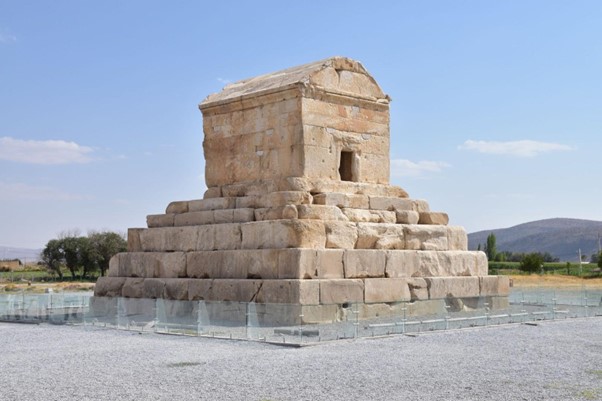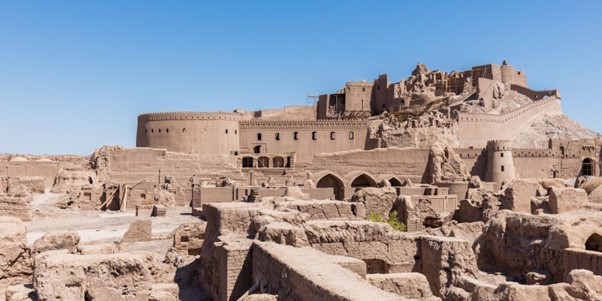Persia is an ancient and historical region located in southwestern Asia, primarily corresponding to modern-day Iran. It is known for its rich cultural, artistic, and architectural heritage and significant literature, science, and philosophy contributions.
Throughout its history, Iran has been home to many empires, from the ancient Achaemenids to the Sassanids, each leaving their mark on the country in the form of magnificent historical sites that still stand today. The extant Persian historical sites offer visitors a glimpse into the country’s rich cultural and architectural heritage.
In this blog, we’ll explore some of the greatest Persian historical sites you can visit today, from the grandeur of Persepolis to the intricate design of Golestan Palace. Whether you’re a history buff or just interested in experiencing a new culture, these historical sites are sure to inspire and amaze you.
While you’re here, please look at our Iran Tour: Empires of Everlasting Fires, which takes guests to many of Iran’s most wondrous archaeological sites in the company of an expert historian guide.
Visiting Persian Historic Sites
Persia has a history spanning 5,000 years. Over this period, Persia has been home to many empires, including the Achaemenids, Parthians, Sassanids, and Safavids, each leaving their mark on the country in the form of breathtaking historical sites.
Visiting Persian historical sites today allows travelers to experience a culture and history deeply rooted in ancient traditions and provides a unique and immersive travel experience.
The vast array of Iran’s historical sites also offers visitors a glimpse into the various empires that have shaped the region over the years, from the mighty Achaemenids to the Islamic caliphates. By experiencing the grandeur and beauty of these historical sites, travelers can gain a deeper understanding of the people, culture, customs, and belief systems that have shaped modern-day Iran.
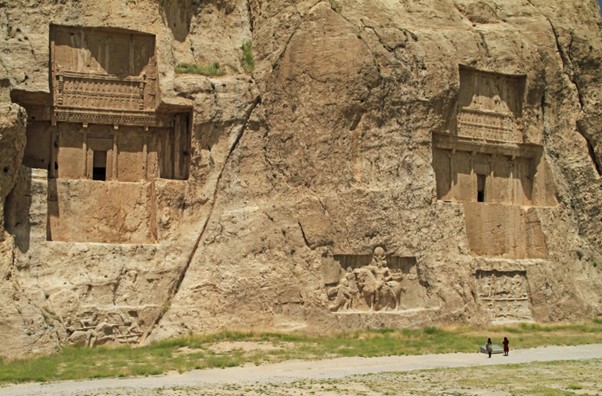
Persepolis
Persepolis is a stunning historic site that was once the capital of the mighty Achaemenid Empire. The ruins of Persepolis are a testament to the empire’s power and wealth, boasting monumental structures and intricate carvings that have survived for thousands of years.
Visitors to Persepolis can explore the city’s ruins, including the Gate of All Nations, the Apadana Palace, the Throne Hall, and the Treasury. These key historical attractions showcase the empire’s architectural prowess and highlight the importance of Persepolis in Persian history.
The Gate of All Nations is an impressive entryway to Persepolis, featuring two winged bulls and relief carvings of delegations from various subject nations. The Apadana Palace is another notable attraction, with its grand staircase, columns, and reliefs depicting scenes from the empire’s daily life.
The Throne Hall, the most significant building in Persepolis, is also a must-see attraction. Here, visitors can see the magnificent Throne of Xerxes and the walls adorned with carvings of lions and other animals.
Lastly, the Treasury is a small building that stores the empire’s precious artifacts and gifts from subject nations. All these historical attractions in Persepolis make it an exciting destination for history-loving tourists, allowing them to experience the grandeur and power of one of the world’s greatest empires.
If you’d like to explore the treasures of Persepolis with like-minded travelers and an expert guide, consider booking your place on Far Horizons’ Iran Tour – the tour features 12 extraordinary UNESCO World Heritage Sites.
Naqsh-e Jahan Square
Naqsh-e Jahan Square, also known as Imam Square, is a historical site located in the heart of Isfahan, Iran. The square is one of the largest public squares in the world and has been a UNESCO World Heritage Site since 1979.
The square was built during the Safavid era and is considered one of the world’s finest examples of Islamic architecture. It was the centerpiece of the empire and played a significant role in shaping the history of Iran.
For travelers, Naqsh-e Jahan Square offers a chance to experience the architectural grandeur of the Safavid era. The key sites in the square include the Imam Mosque, Ali Qapu Palace, and Sheikh Lotfollah Mosque.
The Imam Mosque, also known as the Royal Mosque, is a stunning example of Islamic architecture, with its intricate tilework, domes, and minarets. Ali Qapu Palace, meanwhile, was the palace of the Safavid kings, and its elaborate design is a testament to the empire’s power.
Lastly, the Sheikh Lotfollah Mosque, with detailed mosaics and subtle coloring, is a masterpiece of Safavid art and architecture. Visiting Naqsh-e Jahan Square is a must-visit destination when exploring the history and culture of Iran.
Pasargadae
Pasargadae is an ancient historical site in Fars Province, Iran. It was the capital of the Achaemenid Empire under Cyrus the Great and is considered one of Iran’s most significant archaeological sites. The site has been a UNESCO World Heritage Site since 2004.
For travelers, Pasargadae offers a special chance to delve into the fascinating history of the Achaemenid Empire and the legacy of Cyrus the Great. The key sites in Pasargadae include the Tomb of Cyrus, the Palace of Cyrus, and the Gatehouse.
The Tomb of Cyrus dates back to 530 BC and is the final resting place of the Achaemenid Emperor. The Palace of Cyrus is a stunning example of magnificent Achaemenid architecture, with enormous columns and exquisite carvings. Finally, The Gatehouse features a lion and bull relief, representing the Achaemenid Empire’s might.
Visiting Pasargadae is a one-in-a-life chance to immerse oneself in ancient history!
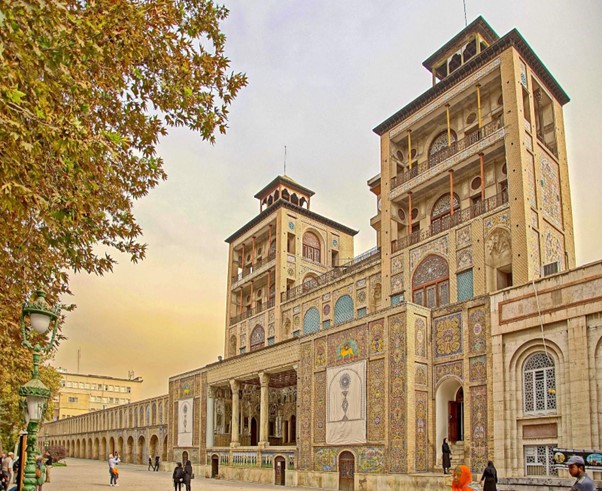
Golestan Palace
Golestan Palace is a historic royal complex located in Tehran, Iran, and is another UNESCO World Heritage Site making our list.
The palace was the residence of the Qajar Dynasty and is considered a masterpiece of Iranian architecture and design. The palace features numerous buildings, halls, and gardens that showcase the grandeur and wealth of the Qajar Dynasty.
Visiting Golestan Palace is a must for anyone passionate about Persian history. Some of the palace’s highlights include the Mirror Hall, the Marble Throne, and the Talar-e Aineh (Hall of Mirrors). The Mirror Hall is an impressive reception room adorned with elaborate mirror work and a chandelier, while the Marble Throne is a spectacular example of Persian art and architecture.
The Talar-e Aineh (Hall of Mirrors) is a large hall that features ornate mirror work, crystal chandeliers, and intricate frescoes. The palace also features beautifully manicured gardens, fountains, and pools. A visit to Golestan Palace allows you to experience the grandeur of one of the world’s most significant dynasties.
The Citadel of Bam and the Bazaar of Bam
The Citadel of Bam and the Bazaar of Bam are located in the city of Bam, in southeastern Iran.
The Citadel of Bam, also known as the Arg-e Bam, is an ancient fortress that dates back to the 6th century BC and is the largest adobe structure in the world. The citadel is a stunning example of Iranian architecture and a testament to the ingenuity and creativity of the region’s people.
Meanwhile, the Bazaar of Bam is a historic market operating for over 2,000 years and was an important trade center on the Silk Road. With its intricate alleyways and winding streets, the market allows guests to experience the region’s traditional trading culture and immerse themselves in the local way of life.
A visit to the Citadel of Bam and Bazaar of Bam is guaranteed to be an unforgettable experience.
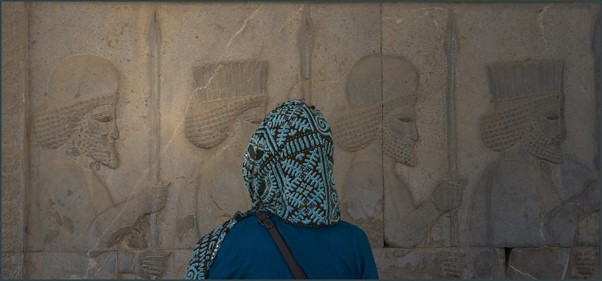
The Persepolis Museum
An important treasury of historical knowledge, The Persepolis Museum is located near the ruins of Persepolis in Fars Province, Iran. The museum showcases a vast collection of archaeological artifacts and relics from ancient Persepolis and the Achaemenid Empire. The exhibits include pottery, jewelry, metalwork, and sculptures that offer insights into art, architecture, and culture.
The Persepolis Museum is a key site for travelers passionate about history. The museum allows you to expand your knowledge of Persian history through interactive exhibits and expertly curated museum spaces.
Why Travel with Far Horizons…
Iran is home to several of the world’s most extraordinary archaeological sites, allowing visitors to delve right into more than two and a half thousand years of history.
With Far Horizons’ Empires of Everlasting Fires Iran Tour, you will get to explore many of the sites discussed in this blog, along with a host of other historical sites that few tourists ever manage to see.
Far Horizons has been taking groups to Iran since 2000, and it remains an immensely popular choice among our guests. The tour is led by an expert on ancient Persia and over 17 days, you will get to enjoy interacting with local people and visit no fewer than 12 UNESCO World Heritage Sites!
If you wish to explore other international tour options, explore our full selection of Archaeological Tours. Additionally, we also offer Custom Tour Options – if you have a dream destination not covered in our tours, reach out to our expert travel designers today!
If you have any questions, please get in touch.
